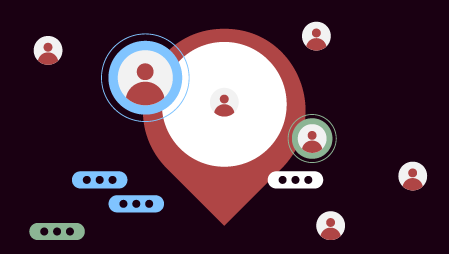Ready to learn Machine Learning? Browse courses like Robotics Application Machine Learning developed by industry thought leaders and Experfy in Harvard Innovation Lab.
Visit any website focused on business software and you’ll find robotic process automation (RPA). And for good reason: RPA software has proven to reliably reduce costs by removing manual work from various business workflows and processes.
But is RPA adoption all enterprises need to automate their business processes? What else does process automation have in store other than RPA? To answer these questions, it helps to understand where RPA technologies came from and at what capabilities they now offer.
Process Automation: Let the Real RPA Stand Up
Process automation goes back to the early twentieth century, but let’s focus on the 1990s, when commercial software-based automation for human-work processes first emerged. Before that, in the 1980s, most automation was the result of custom-developed, proprietary applications targeting back-end processes—for example, what Sabre Technologies provided in calculating airline fares and fare-matching/booking automation.
“Expert systems”—a form of AI—emerged in the 90s and allowed a person to create encoded rule sets to automate specific tasks. Anyone familiar with Outlook’s autoresponder has encountered work automation using rules. You create a rule based on certain conditions that tells the application when to automatically send a response email. This type of user-based automation emerged as a feature of existing applications.
Fast forward to the early 2000s when companies began looking to process automation for easier ways to “integrate” data from one application into another, especially with websites offering more services. Software emerged to “screen scrape” web-based and other GUI-based data to automate form filling, to aggregate account data from many different sites or applications, and so on. It wasn’t just data integration, though. Other variants using a similar approach included automated software testing (e.g., for websites), such as simulating users executing different commands.
What separated these new automation solutions from older ones was that they were purpose-built commercial solutions with user-friendly interfaces that didn’t require programming. You simply created a configuration by visually selecting the data from one application GUI and “mapping” it to another.
Enter Robotic Process Automation
Around this same time, software vendors focused on providing an underlying automation platform offering a generic way to apply these data-integration methods with a workflow engine to automate an entire process. These tools gained popularity in the IT world, where efforts involve lots of repetitive rules-based tasks. Take, for instance, provisioning a new employee with a computer desktop and software. Before these automation platforms, an IT staff member would need to manually install the necessary software on a desktop and configure the network, email software and other central systems with the new employee’s information and access levels. Most of these tasks are rote and rule oriented. Using automation tools, such a process requires no manual effort.
Where RPA and AI Intersect
RPA is founded on an early example of expert systems. This form of AI simply entails encoding the knowledge of a subject-matter expert for a given task into a set of rules that a computer-based system can execute. As such, the more specific and well known the given task, the better RPA is at successfully automating it.
But RPA software lacks built-in “intelligence.” Most “bots”—a term that identifies a specific automation routine—only work against given rule sets in structured processes. They don’t adapt to new scenarios or learn from mistakes. This realm of AI is called “machine learning.”
The most mature (but still relatively new) RPA application of machine learning is the advance of “learn by example” into the bot-configuration process, where a system can monitor—completely in the background—a given SME’s actions for different situations. This monitoring manifests itself as a “learned” set of rules that can be implemented once complete, and it can be superior and more flexible than traditional rule-based approaches.
Frankly, many RPA deployments lack the ability to dynamically adjust and adapt in an “online” fashion. For example, a process that deviates from its known path is treated as an exception that’s handled manually; often, it lacks any ability to learn about this exception. In essence, the application of machine learning to bot configuration is a sophisticated way to bootstrap the automation of a process, but it still lacks the ongoing ability to add more value to complex, highly-varied tasks and to develop inferences that lead to new insights.
Extending RPA with Machine-Learning-Based Analysis
The most practical way to apply ongoing machine learning to RPA implementations is to treat RPA as a supplier of a large set of operational data. This data feeds into a “learning system” that identifies patterns and other “data features,” which can be used to optimize encoded bots. This ongoing learning has value because you can’t ask operational staff to constantly report their every input and output. You can, however, ask a computer system to do it. This ability presents an opportunity to apply machine-learning-based AI to many different processes.
New-Customer RPA
Let’s consider a financial institution adding a new customer. This process involves extensive coordination between staff reviewing the necessary documentation and the customer supplying it. It involves many perfunctory tasks that are ideal for RPA:
- Verification that all required documentation is submitted
- Review of data against policies (e.g., income and employment)
- Know-your-customer checks, including verification of ID authenticity (e.g., address and ID verification)
These processes can be accomplished manually, but RPA is gradually working its way into this “front office” process. Let’s look at where AI can add more value.
As this illustration demonstrates, the main benefit of applying AI to RPA systems is that it reduces the potential for exceptions, which require costly and slower manual processing. This exception‑reducing workflow takes advantage of RPA’s inherent ability to collect important discreet data in the background and, in the case of failure, the ability to create a closed-loop system through automatic update of existing rule sets using machine learning.
Fulfilling RPA’s Promise
RPA platforms promise to bring major change across many industries. They’ve matured to the degree where successful automation is possible without a large investment of staff time and capital. The RPA leaders have adopted a machine-learning approach to initial configuration that benefits from easier-to-use, more-flexible and adaptive rule sets in place of its more brittle rule-based AI cousin using expert systems.
Still, we have far to go before RPA fulfills its “robotic” mission of removing the human element from our business processes, both in the front and back offices. Using machine-learning platforms to also incorporate new information gathered from background collection of workflow exceptions is the most practical next step to achieving full automation.
Leading article image courtesy of Joe deSousa under a Creative Commons license
First published in The Datacenter Journal.



